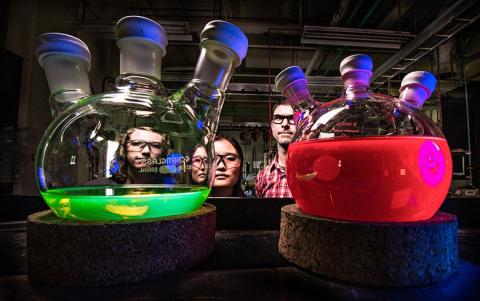Researchers from the US National Renewable Energy Laboratory (NREL) have achieved 10.77% conversion efficiency with perovskite solar cells made from quantum dots with no organic components.
 Solutions of all-inorganic perovskite quantum dots, showing intense photoluminescence when illuminated with UV light
Solutions of all-inorganic perovskite quantum dots, showing intense photoluminescence when illuminated with UV light
The result was achieved with a thin film made of nanocrystals of cesium lead iodide (CsPbI3). The team discovered a method to keep the crystal structure in the all-inorganic perovskite material stable at room temperature, something that was previously possible only at temperatures exceeding 600 degrees Fahrenheit. The use of methyl acetate as an anti-solvent to remove excess unreacted precursors proved a crucial step in increasing the nanocrystals' stability.
Transforming the nanocrystals into a thin film was done by repeatedly dipping them into a methyl acetate solution, achieving a thickness of 100 to 400 nanometers. Used in a solar photovoltaic (PV) cell, the CsPbI3 nanocrystal film reached 10.77% conversion of sunlight into electricity at a high open circuit voltage.
To date, most perovskites research work has focused on a hybrid organic-inorganic structure, surpassing efficiencies of 22%. However, the organic component has so far shown it is not durable enough for long-term use in solar devices, NREL explained.